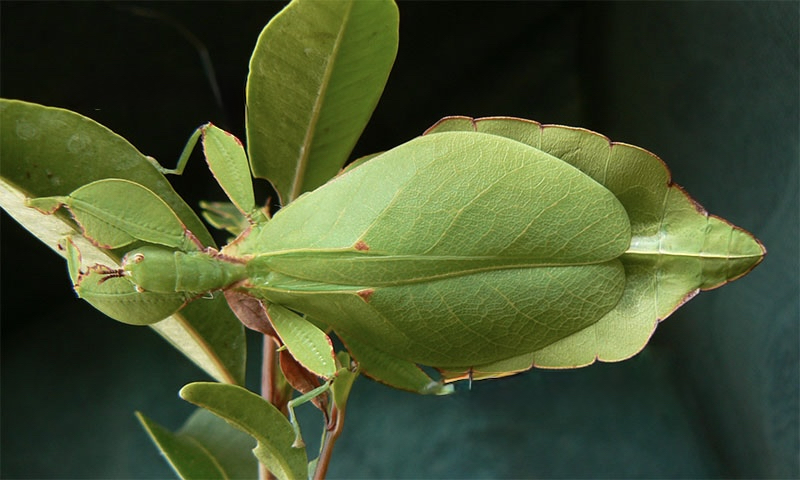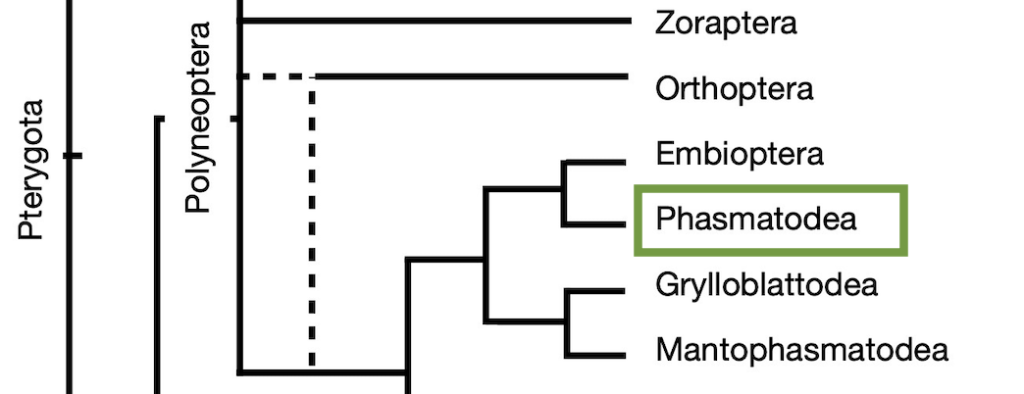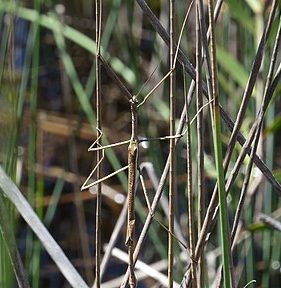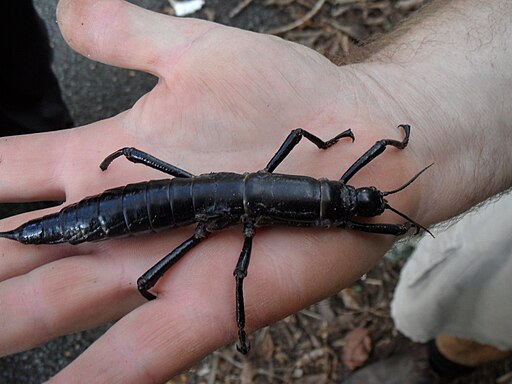22 Orders of Insects: Phasmatodea


Order Phasmatodea
Phasmatodea
- common name: stick insects & leaf insects; mimic sticks or leaves
- from the Greek, ‘phasma’ = apparition or ghost
- about 2,500 described species worldwide; 150 Aust. spp.
- most abundant in tropical regions; occur where ever adequate trees and shrubs occur to feed on
- all are phytophagous; some species are an occasional forest pest
- very slow moving; best know for their camouflage
Characteristics of Phasmatodea
Adults
- medium to large (30-300mm+); body cylindrical & stick-like or flattened & leaf-like
- prognathous & mandibulate
- compound eyes small, laterally placed; ocelli present in winged species
- fore wings form leathery tegmina, hind wings broad with toughened fore margin (remigium); wings are absent in many species, often restricted to males; winged species most common in tropics
- legs elongate & gressorial
- cerci one-segmented, variable in size
Immatures
- Immature stages (nymphs) resemble small adults without wings; ocelli absent
Phasmids are best know for their camouflage but may also have additional elaborate defence mechanisms:
- thanatosis – feigning death
- autotomy (shed legs when grabbed) – good powers of regeneration
- regurgitation
- aposematic colouration: startle displays of colour on hind wings
- kick with spiny legs
- repugnatorial secretions (chemical defenses)
- at least one species, the peppermint stick insect, forcibly sprays caustic solution from the prothorax. Watch The Peppermint Stick Insect (YouTube, 1m 30s)!

More Information
You can read more about phasmids on the Australian Museum’s webpage.
One of the rarest insects in the world is the Lord Howe Island Stick insect (Dryococelus australis). It was believed to be extinct until 2001 when it was rediscovered on Balls Pyramid, a volcanic outcrop off the coast of Lord Howe Island. A captive breeding program is underway at Melbourne Zoo.
Video about the Lord Howe Island Stick insect (YouTube, 1m 50s).
Listed as a critically endangered species

Topic Review
Do you know…?
- the main anatomical features of stick insects
- how stick insects defend themselves
- how stick insects differ from preying mantids

